Ozone: An emerging air pollutant in Dhaka City
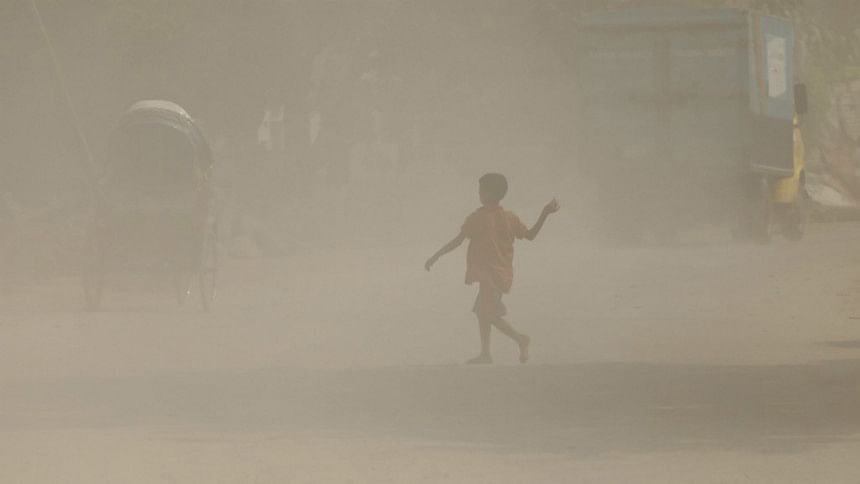
The fact depicted by recent global surveys that Dhaka is the second most air-polluted capital city of the world is surely not delighting for anyone. Several sporadic scientific studies were carried out in the last 25 years to characterise the composition of air pollutants of Dhaka city. Those studies emphasised on concentration and composition of particulate matters and some gaseous pollutants like sulphur dioxide and nitrogen oxides. Meanwhile, the air pollution scenario has started to change in the cities of countries with comparable patterns of urban growth as ours. Many countries like China, India, and Pakistan have been facing severe photochemical smog problem in recent years. This type of air pollution is associated with sunlight-driven chemical reactions, and ozone is a primary ingredient of photochemical smog. In Bangladesh, no particular research has been done yet on ground-level ozone and its impacts on humans, ecosystems and the environment. As a result, ozone pollution is a quite neglected field of interest in our country. Even, having air polluted cities like Delhi in India and Peshawar in Pakistan in our regions, there are few papers on ozone pollution and its impacts published in the context of South Asia.
An interesting feature of ozone is its dual nature. To explain it further, let us label ozone as "good" and "bad". The "good ozone" is located in the stratosphere layer (i.e. 16-50km above the ground) that saves the ecosystems and humans from the harmful fraction of ultraviolet radiation from the sun. On the other hand, ground-level ozone or ozone in the troposphere (i.e. 0-16km above ground) is considered "bad ozone" because of its various negative effects on human health and the environment. According to a report by California Air Resources Board (2016), it is high time for people to think about ozone pollution along with other gaseous pollutants, for instance, carbon dioxide, carbon monoxides, sulphur dioxide and nitrogen oxides because of its effects on the health of humans and the environment. For instance, it can damage the tissues of the respiratory tract, cause inflammation of lungs and result in symptoms like coughing, chest tightness and worsening of asthma symptoms. Ozone causes substantial damage to crops, forests and ecosystems. According to American Geophysical Union (2014), ozone pollution in India damaged millions of tons of the country's major crops just in one year, caused losses of more than a billion dollars, and destroyed food enough to feed tens of millions of people living below the poverty line. Ozone can cause substantial damage to a variety of materials, such as rubber, plastics, fabrics, paint and metals through oxidation. Damage from ozone exposure can result in significant economic losses as a result of the increased costs of maintenance, upkeep and replacement of these materials.
Generally, ozone is formed in the troposphere by nitrogen oxides reacting with volatile organic compounds (VOCs) in the presence of sunlight. Nitrogen oxides are released into the atmosphere as a by-product of any combustion like from automobiles, coal-fired power plants, different industries and biomass burning. VOCs also come from man-made sources, such as cars, service stations, dry cleaners and factories. Although, precursors of tropospheric ozone often originate in urban areas, winds can carry nitrogen oxides hundreds of kilometres, causing ozone formation to occur in less polluted regions as well.
Ozone pollution poses a formidable risk, especially for Bangladesh for some unique reasons. Due to its geographic position, Bangladesh receives a high amount of solar radiation, which is a precondition for building up ground-level ozone. Bangladesh lacks in emission control of carbon dioxide, carbon monoxide, sulphur dioxide, nitrogen oxides and volatile organic compounds (VOCs), which are the major precursors of tropospheric ozone. Ozone pollution can become a great risk for a country like Bangladesh in the near future. Therefore, the unique environmental situation of Bangladesh makes it a very suitable "automated cooking station of ground level ozone" by supplying the required ingredients from air and making up the required temperature to create ground-level or tropospheric ozone. But due to the absence of any baseline information, the people of Bangladesh do not know that ozone does exist in their surrounding air, and exceeding a certain level, it can become a very dangerous pollutant. Moreover, the number of proper research work on ground-level ozone is very few. Keeping all these aspects in consideration, we, the researchers from the Department of Environmental Science and Management of the North South University, who have co-authored this article, conducted a small study on ground-level ozone. The objectives of our research were to provide baseline information on ground-level ozone concentration and to observe the variation of tropospheric ozone concentration over a 24-hour period. For the purpose of our research, 24 hours' ozone concentration was accessed from a continuous ozone sampler and analyser in one-minute interval on April 29, 2016. This analyser is located at the Air Quality Research and Monitoring Laboratory (AQML) of the Centre for Advanced Research in Sciences (CARS), University of Dhaka. It would be relevant to mention here that due to some restrictions of the AQML, ozone data for multiple days or seasons and subsidiary data for other chemical species could not be accessed, which were necessary for a robust study.
According to Air Guide for Ozone by Environment Protection Agency of the United States (2015), the lowest safe limit for ground-level ozone is 60 parts per billion (ppb). We found an average of 40-45 ppb ozone concentration during mid-noon to afternoon of that day. Dhaka University Campus, where the ozone analyser is located, is a relatively green area with considerable amount of vegetation compared to other parts of the city and April 29, 2016 was a Friday. It may be assumed that if 45 ppb ozone concentration is measured on a weekend in a relatively motorised vehicle-free place, the concentration of ozone might have surpassed the lowest safe limit (i.e. 60 ppb) in heavily urbanised locations in Dhaka city. As no relevant data have been published yet, people have no idea about the causes and risks of ozone pollution. If atmospheric scientists and environmental policymakers do not pay serious attention to the actual status of ground-level ozone concentration in Dhaka city, our city may face serious air pollution episodes like Delhi of India, Beijing of China and Peshawar of Pakistan in years to come. Ozone pollution will be very difficult for Bangladesh to deal with, when the country is already burdened by natural disasters and other kinds of pollution and climate change related issues.
Dr Biswas Karabi Farhana is an atmospheric scientist and air quality specialist, and currently a professor at the Department of Environmental Science and Management, North South University. Subah Tasnim completed her Master's and Bachelor's degrees in Environmental Science and Management at the North South University.

 For all latest news, follow The Daily Star's Google News channel.
For all latest news, follow The Daily Star's Google News channel. 

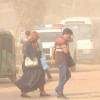
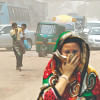
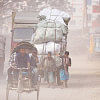
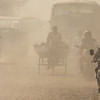



Comments